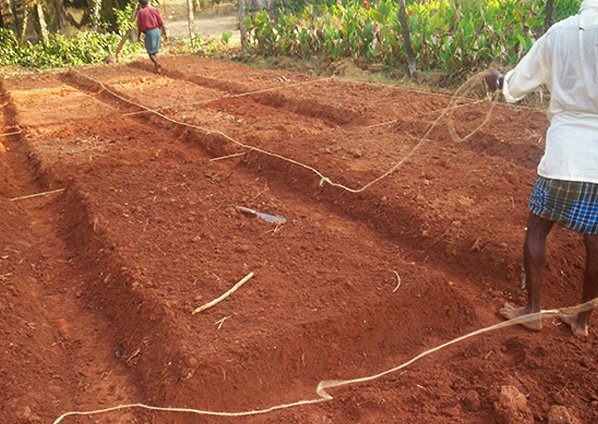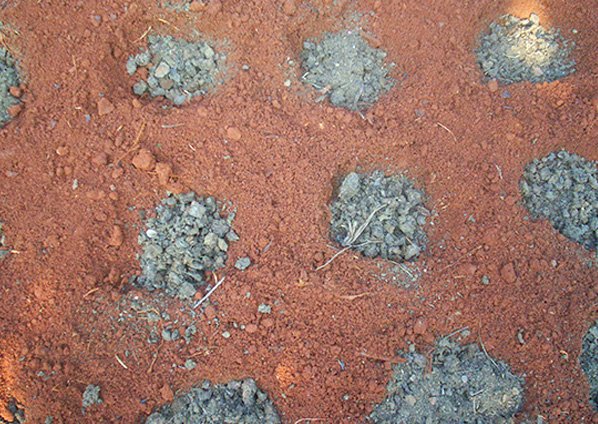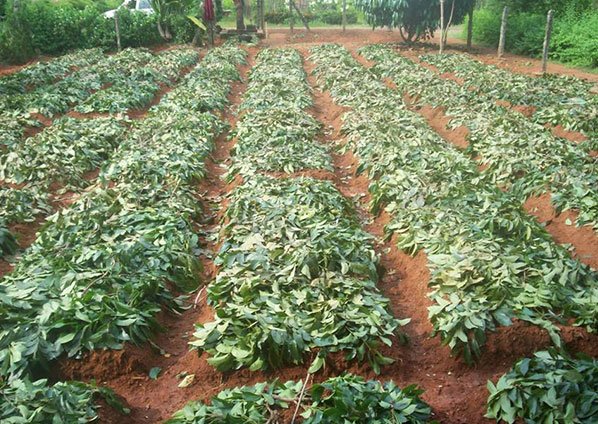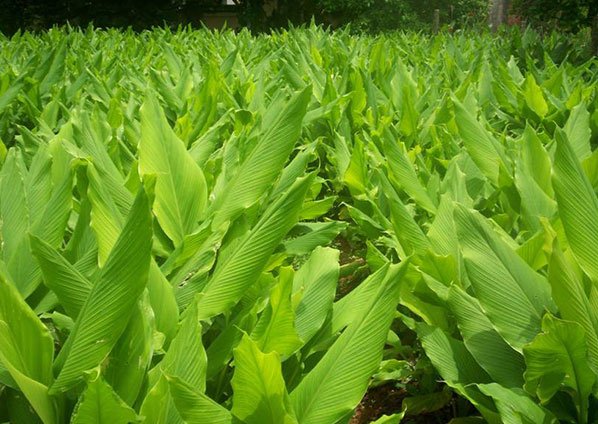The cultivation practices of Kasthuri Turmeric
The cultivation practices of Kasthuri Turmeric
The cultivation of the Kasthuri Turmeric is similar to that of ginger, turmeric, mango-ginger etc. Kasthuri Turmeric is shade tolerant. It can be well accommodated as an intercrop in coconut gardens or under other tree crops. It can be rotated with other short duration crops like vegetables and also as a crop component in homesteads.
Prepare beds of 3 m length, 1 m width, 25 cm height and 40 cm spacing between beds during April-May with the commencement of pre-monsoon showers. Take small pits of the size of split coconut shell in the beds with a spacing of 25 x 25 cm and fill the pits with 1/2 kg dried and powdered cow dung. Instead of cow dung, compost, vermicompost or any other organic manure will be sufficient. Instead of applying organic manure to individual pits, broadcasting 25 kg organic manure per bed and incorporating well into the soil can also be adopted. Rhizome bits weighing about 15 g with at least one viable bud is planted at a depth of 5 cm. A seed rate of approximately 1500 kg per ha is required.
A good mulch with a green or dried leaf or any other suitable organic mulch material is to be applied immediately after planting. The mulch protects seed rhizomes from drying, retain moisture of the soil in the bed, prevent soil erosion during rains, enhance the growth of beneficial soil microbes, enhance soil fertility and thus ensure good vegetative growth and productivity. It is advisable to repeat mulching after two months. Remove weeds during the first and second months and repeat if necessary. Earth up the beds two months after planting and repeat if necessary. In the absence of distributed monsoons, irrigation may be given.
Pest attack is not common for small scale cultivation. Stem borer attack is common in large scale and repeated cultivation. It can be controlled by applying organic pesticides like azadirachtin. Since Kasthuri Turmeric rhizomes are used for medicinal as well as cosmetic purpose, only organic cultivation is to be adopted.
The harvested rhizomes are cleaned well using water and chopped into thin slices like banana chips. It is then dried under sun for 4-5 days and powdered using mixer grinder for small scale and in mills for large scale preparation of Kasthuri Turmeric powder. The fresh rhizome will have about 20 to 25% recovery of powder.
The Kasthuri Turmeric powder can be mixed with pure rose water, milk, curd, honey or water to form a paste and applied as face cream or face pack. Regular (2 to 3 weeks) use of this gives healthy skin, an attractive glow and fresh look on the face. There is also good reduction in pimples and acne on the face.
Click on this link to see the short film video in English / Malayalam for detailed information.










